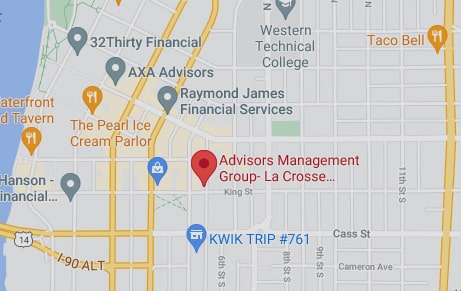If this blog feels a tad familiar, it is, but stick with us. Since the cost of groceries has continued to increase, we wanted to continue the dialog again to help you with the cost of feeding your family. Although inflation is beginning to stabilize, food costs are still on the rise. According to data supplied by the US Department of Agriculture, in 2020 a family of four which included two adults and two small children, who were moderate spenders, spent about $934.90 per month. In 2023 this same family is spending about $1173.50 per month. This is a notable rise; however, it is only a hypothetical scenario. In all actuality, if we evaluate your family from 2020, your kids have grown and might be eating more or perhaps your family has expanded. Growing families have been hit particularly hard by the increase in food costs.
While prices have gone up, some of the products you frequently buy may also be getting smaller. “Shrinkflation” is not just an urban legend. You may have noticed that the pack of cookies that you have always bought looks just a bit different. The cookies are smaller or there are fewer in the row. Or perhaps you noticed the bottle of dish soap looks just a little less full than the last time you bought it. Snack chips are notoriously known for this phenomenon. When consumers take note, they release a new larger size at a much higher price. “Shrinkflation” only adds to the stress of increasing food costs.
With so much stacked against you, how do you keep it in check at the checkout? Here are some tips to help you.
Eat Food In Season And Buy Food Grown Locally
Those who live in the northern regions of the country know just how expensive things like fresh berries can be in the cold months. Fortunately, costs drop significantly as the growing season expands across the country. Local food travels fewer miles which results in less transportation costs and a fresher product. Check out local farmer’s markets and garden stands, or purchase Community Supported Agriculture (CSA) produce or meat boxes from local farms or co-ops. Another way to lower your food budget is to plant a garden, not only can this help lower the cost to feed your family, but it is also a great outdoor activity for everyone including children. Finally, learning to preserve larger quantities of food in season by freezing and canning for use over the winter can allow you to enjoy your favorite foods throughout the entire year and can help cut down on food waste.
Plan Your Meals And Shop With A List
We all know it is a bad idea to shop on an empty stomach, but shopping without a plan can also put all sorts of extras in your cart. Before you head out to shop, make a list of each week’s meals and see what items are already on hand. While you are taking inventory of your pantry, make a list of the things you are running low on. Keeping staple items on hand can help you avoid unnecessary extra trips. Shopping every other week can also save you time and money. Once you arrive at the store, shopping from a list will help you to avoid impulse purchases or just walking down the isles putting unnecessary items in your cart.
Track And Compare Prices On Items You Buy Regularly
If you track the prices on items you buy frequently, you will be able to evaluate if something is a deal or not. Most stores rotate their sales and soon the patterns of pricing will be easy to anticipate. Shop items featured in the weekly flyer and use store loyalty programs and coupons. Check out the clearance area and fresh items reduced for quick sale. Only buy reduced items you can use right away or freeze. Don’t be afraid to switch up where you shop or buy store-brands instead of name-brand items. If you are willing to think outside the box, you may find great deals at dollar stores, scratch and dent liquidators, Amish bulk stores, and discount grocery stores.
Buy in larger quantities and portion out
While a 5.3 oz cup of Greek yogurt costs $1.49 or $0.28 per oz, the same yogurt in a 32 oz container costs $5.79 or $0.18 per oz. Convenience can add considerable cost to items. Instead consider just scooping out the yogurt in a bowl or a single serve food storage container. The same thing applies to everything from snacks to meat. If a bulk pack is too much to use, you can always break down the large packages into smaller portions that will fit your needs. Use food storage containers, storage bags, and freezer paper to store these small portions. Over time these savings can really start to add up.
Avoid Waste
If your crisper drawer is where green things go to die, you are also wasting the green in your wallet. If your plans change often or find yourself not eating your produce fast enough, consider frozen or canned produce instead. It typically costs less and has a longer shelf life. Also don’t make too much when preparing meals especially if you or your family doesn’t like leftovers. Cook just enough to satisfy your family’s hunger. If you do cook extra, reimagine your leftovers into another meal. Extra rice can easily be made into fried rice, left over steak can become steak and eggs, pasta can be added to soups and salads. Baked chicken can become chicken salad. If you still find yourself with leftovers, place them in the freezer to use them later when you need a quick meal.
While rising food prices can cause a lot of stress to your budget, putting some strategy into your spending can not only save you money, but it can also save time and reduce food waste as well. Knowing what you have on hand, what you need and what you are spending will put you in the driver’s seat despite high food costs.
 |
Rebecca AgamaiteInvestment Advisor Representative Rebecca joined the firm in 2011 as an Investment Advisor Representative. In this role, she works with clients to manage their investment assets and help them obtain their financial objectives. Rebecca brings a great deal of experience to the team having worked for several years at Marshall & IIsley Bank and MetLife. She earned a Masters of Business Administration degree (with an emphasis on finance) from Concordia University. |
Advisors Management Group, Inc. is a registered investment adviser whose principal office is located in Wisconsin. Opinions expressed are those of AMG and are subject to change, not guaranteed, and should not be considered recommendations to buy or sell any security. Past performance is no guarantee of future returns, and investing involves multiple risks, including, but not limited to, the risk of permanent losses. Please do not send orders via e-mail as they are not binding and cannot be acted upon. Please be advised it remains the responsibility of our clients to inform AMG of any changes in their investment objectives and/or financial situation. This commentary is limited to the dissemination of general information pertaining to AMG’s investment advisory/management services. Any subsequent, direct communication by AMG with a prospective client shall be conducted by a representative that is either registered or qualifies for an exemption or exclusion from registration in the state where the prospective client resides. A copy of our current written disclosure statement discussing our advisory services and fees continues to remain available for your review upon request.



